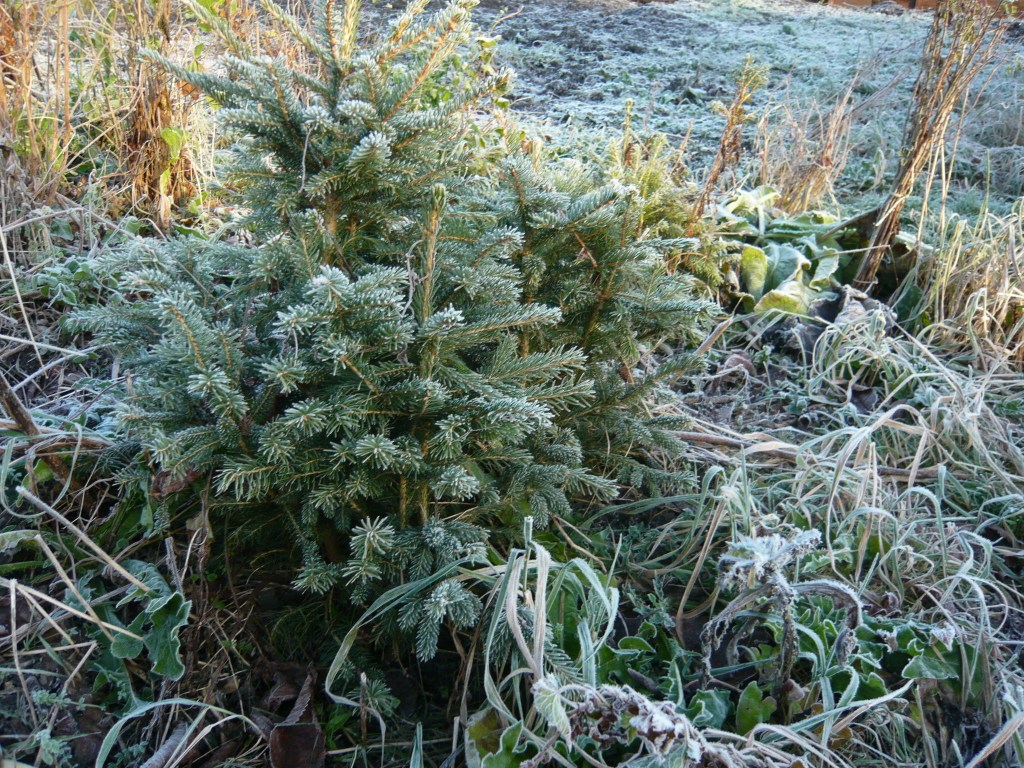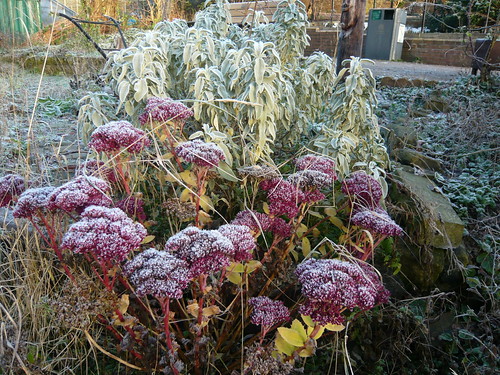
Hoar Frost in my Garden
A hoary old chestnut or an updated post from 2012?
What is Hoar Frost
- Hoar frost is airborne crystalised frost caused by rapid cooling of plants whilst the air is still and moist.
- It tends to be shorter lived than a full frost when temperatures remain well below freezing.
- ‘Air hoar frost’ can cover bushes and plants with ice crystals that look like white hair.
- Cold air flows down into hollows and can create frost pockets.
- Rime is a thicker ice deposit often created in windy conditions.
Damage and Treatment After Hoar Frost
- Annuals like nasturtiums will naturally succumb to frost.
- Soft leaved plants will die back but the roots or tubers will not suffer.eg. Dahlias
- Hoar frost on a lawn should be left to thaw. If you walk on the grass, stems will be snapped and damage will be visible for a long time
- Even weak sun will thaw a hoar frost. (see below)
Tips to Avoid Hoar Frost
- Cover tender plants in hessian or fleece if you can’t bring them under cover
- Do not plant in frost pockets but prefer open breezy situations.
- Plant later in the year when the danger of frost has gone.
- Take care of young fruit tree blossom, Magnolias and Camellias that are damaged by frost and a too rapid thaw

Frost and freezing conditions can help or damage your garden but here are some tips for Gardeners when dealing with cold and frosty weather. In the meantime enjoy the images hoar frost creates and the pleasures of your garden on a crisp cold morning.
Helpful Frost
Hard winter frosts help define the seasons and start the renewal process for Spring. Many plants like a cold spell to help seed germination as with many alpines, to develop roots of Daffodils or to kill off foliage that has achieved its purpose. Frost will blacken the leaves of Dahlias signaling the time to lift the tubers.
Frost will break down the clods of soil in a vegetable garden that has been dug over and left in lumps.
Too many insects and pests will cause problems unless the frost kills or reduces their number. Frost should be welcomed as an environmentally friendly treatment.
Frost Pockets
Cold air will run down slopes, like invisible water, until it runs into an obstruction or ends up in a depression. It will remain in this position creating a frosty hollow or frost pocket to further damage your plants. Cold air is heavier than warm air and you should design the garden layout to allow cold air to drain away. Take account of frost pockets when planting by avoiding putting tender plants and early flowering plants in frost pockets. I have some of my Rhubarb in a frost pocket as it helps the crowns to be prolific.
Late Frosts
Whilst winter frost may have benefits, spring frost can damage early growth. Fruit tree buds and blossom can suffer damage but you may be able to seek out frost resistant varieties or select late varieties
Frost on the buds of Magnolia and Camellia will be more damaging if the early morning sun melts the frost too quickly so it is wise to shelter them from the East.
Do not plant new shrubs or plants in frosty soil or rush to plant out half hardy annuals in spring, wait until all risk of frost has gone.

